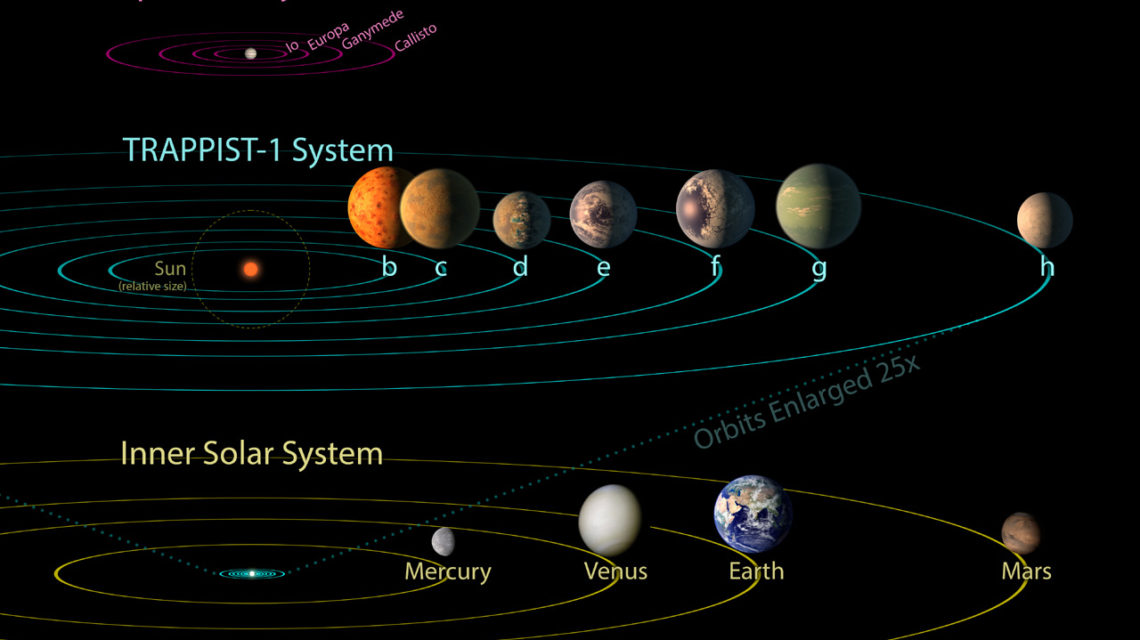TRAPPIST: TRAnsiting Planets and Planetesimals Small Telescope 12/09/2019 – Posted in: Daily News
TRAPPIST-1
TRAPPIST, the TRAnsiting Planets and Planetesimals Small Telescope.
- It is a planetary system, located 39 light-years away from the Solar system, near the ecliptic, within the constellation of Aquarius.
- Around a star which is 12 times less massive than the Sun and only slightly larger than Jupiter, there are at least seven planets in orbit.
- Out of seven planets, three or four are in the goldilocks zone – the place around a star where the temperature is just right, and is not too hot and not too cold, allowing liquid water to exist on the planet.
- TRAPPIST-1 might be Earth-like planet, which is a target for the upcoming James Webb Space Telescope (JWST) – scheduled for launch in 2021.
- TRAPPIST-1 is a nearby red dwarf star, which makes its planets excellent targets for transit spectroscopy. This is because the star is much smaller than the Sun, so its planets are relatively easy to observe.
Background
- The star, TRAPPIST-1, was first discovered in 1999 by astronomer John Gizis and colleagues.
- In May 2016, scientists found three planets around this star using the Transiting Planets and Planetesimals Small Telescope in Chile. In honor of this telescope, scientists began referring to the star as TRAPPIST-1.
Important Information
- NASA’s Hubble Space Telescope was used to find that TRAPPIST-1b and c were unlikely to have hydrogen-dominated atmospheres.
- NASA’s Spitzer Space Telescope and ground-based telescopes discovered that the system has seven planets.
- The farthest planet from the star, TRAPPIST-1h, orbits its star every 19 days.
- TRAPPIST-1 is between 5.4 and 9.8 billion years old. This is up to twice as old as our own solar system, which formed some 4.5 billion years ago.
Source: Trappist
READ MORE DAILY NEWS
- Fingerprint of Earth’s atmosphere
- India’s GDP growth slips
- Global registry on human genome editing
- Jupiter’s Stripes
- Happiness Survey among 28 global markets
- Government bans the import of Polymethyl Methacrylate
- The West Bengal (Prevention of Lynching) Bill, 2019
- Nar-Par-Tapi river linking project
You are on the Best Online IAS preparation platform. You are learning under experts.
We are present on Facebook- Diligent IAS, LinkedIn- Diligent IAS, YouTube- Diligent IAS, Instagram- Diligent IAS. Get in touch with us

